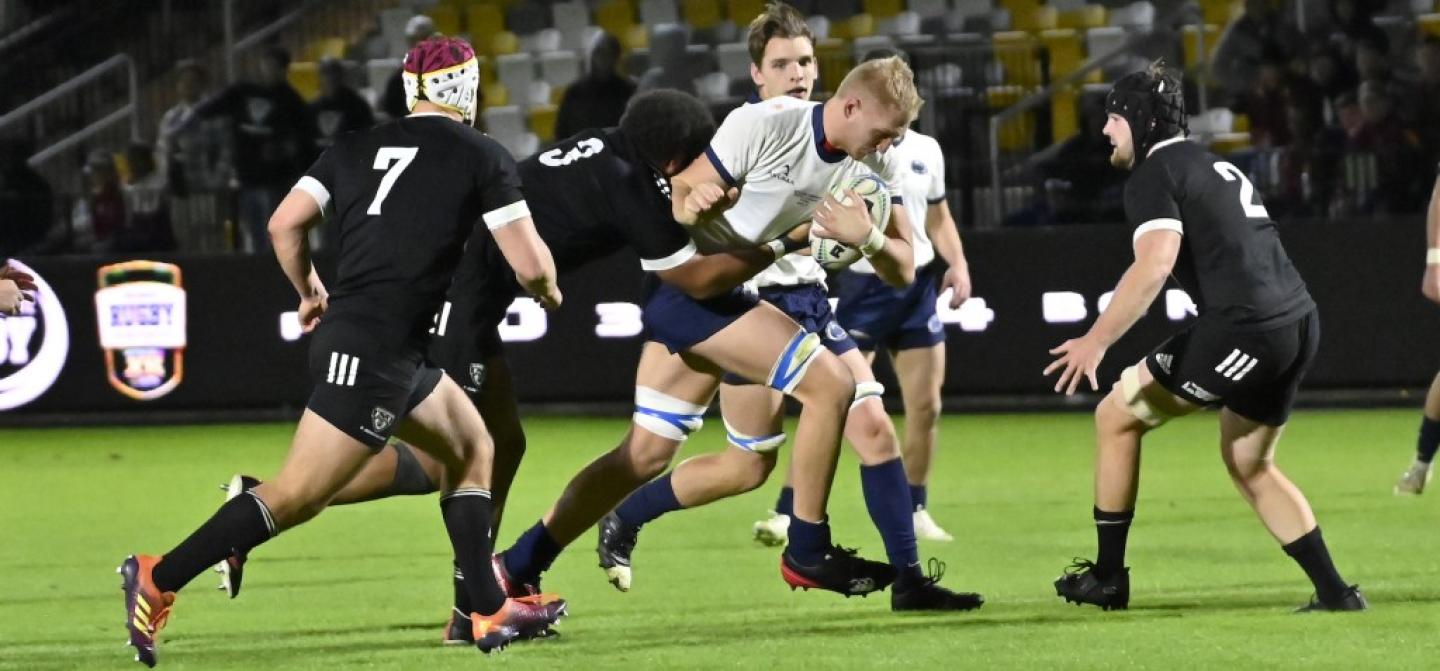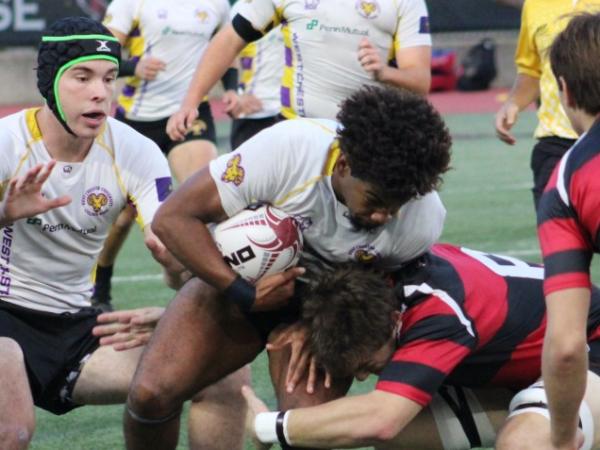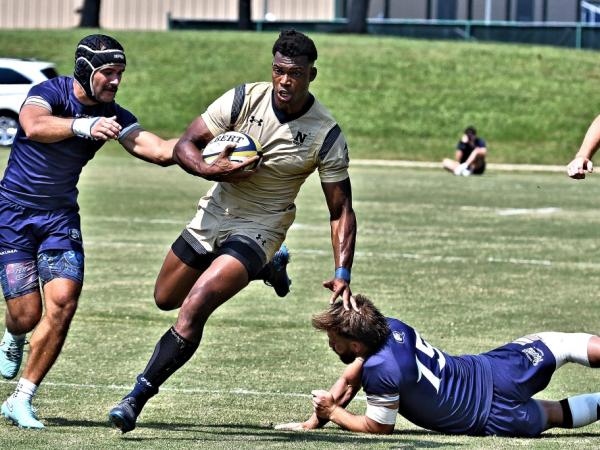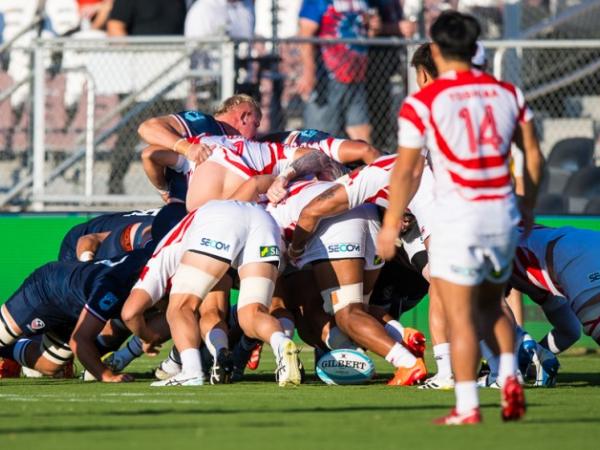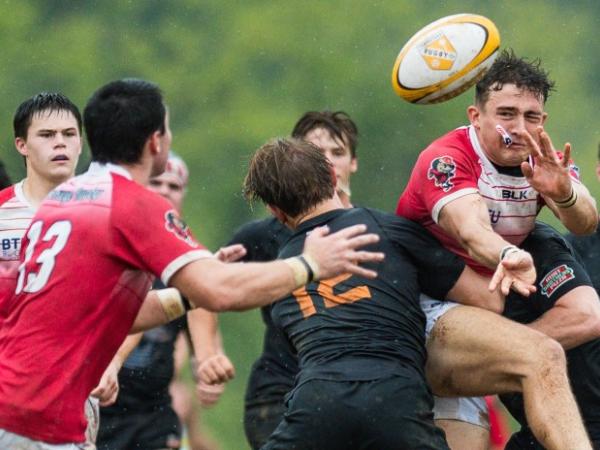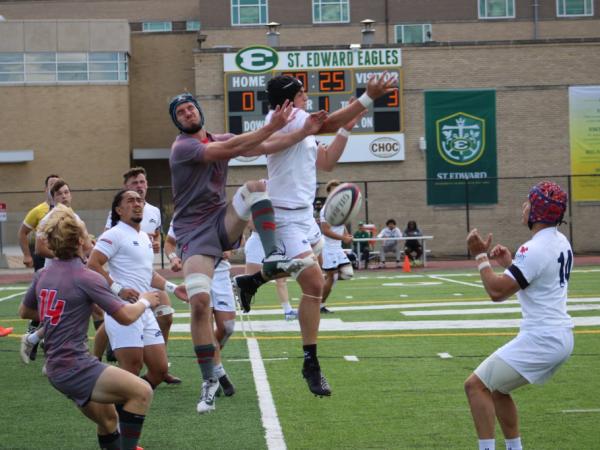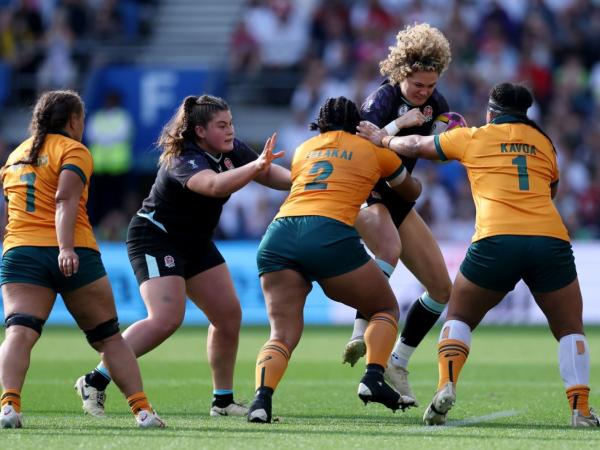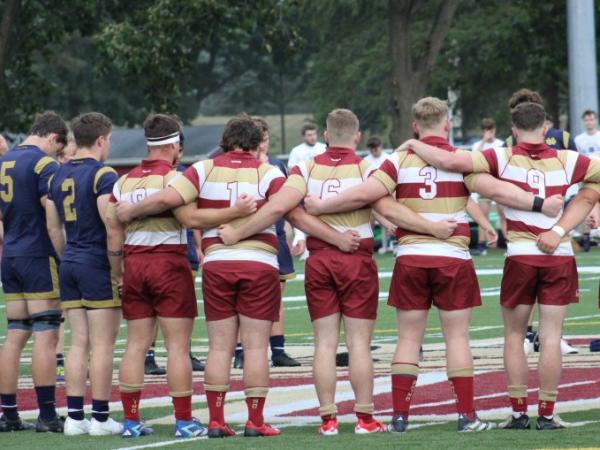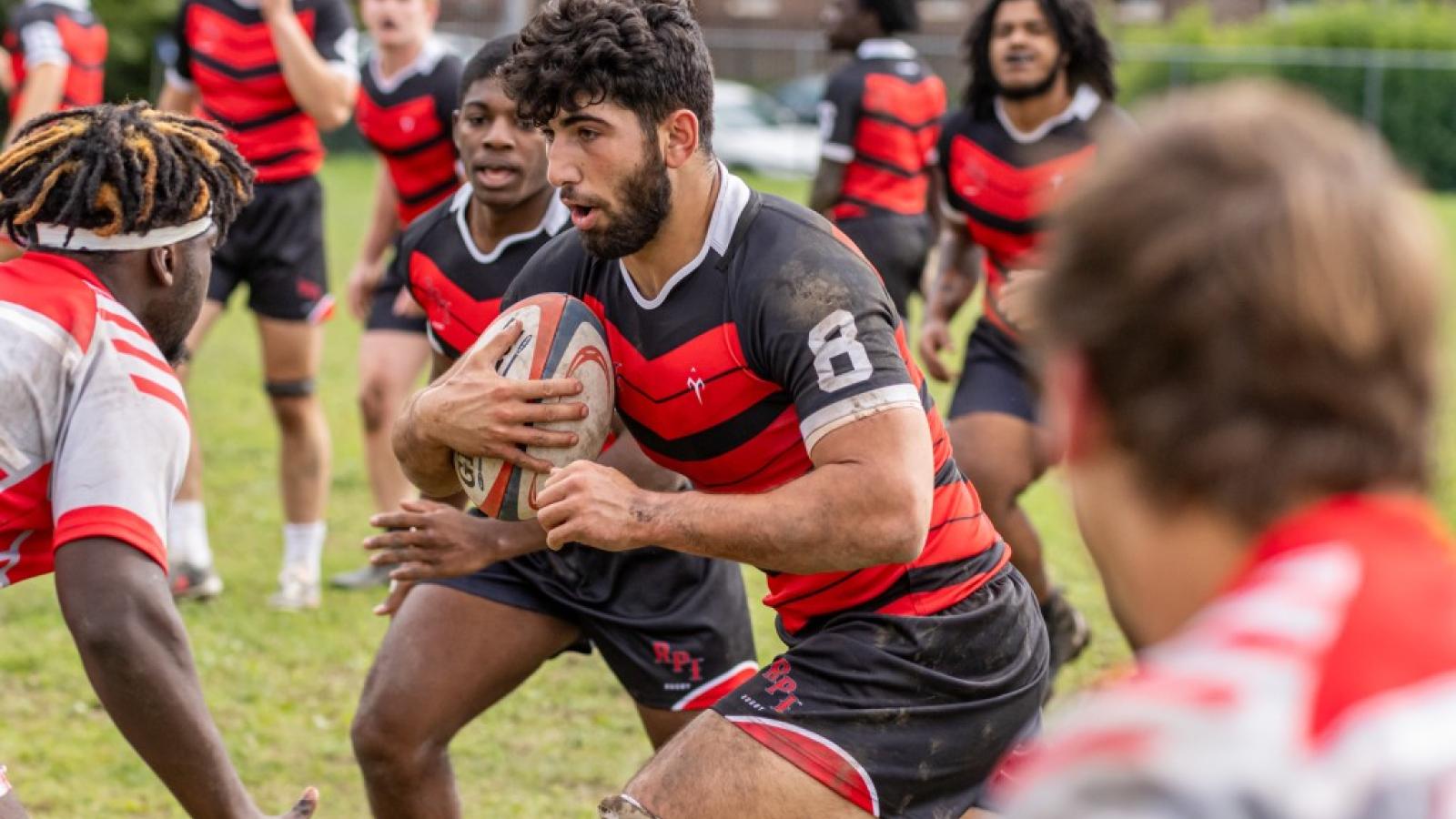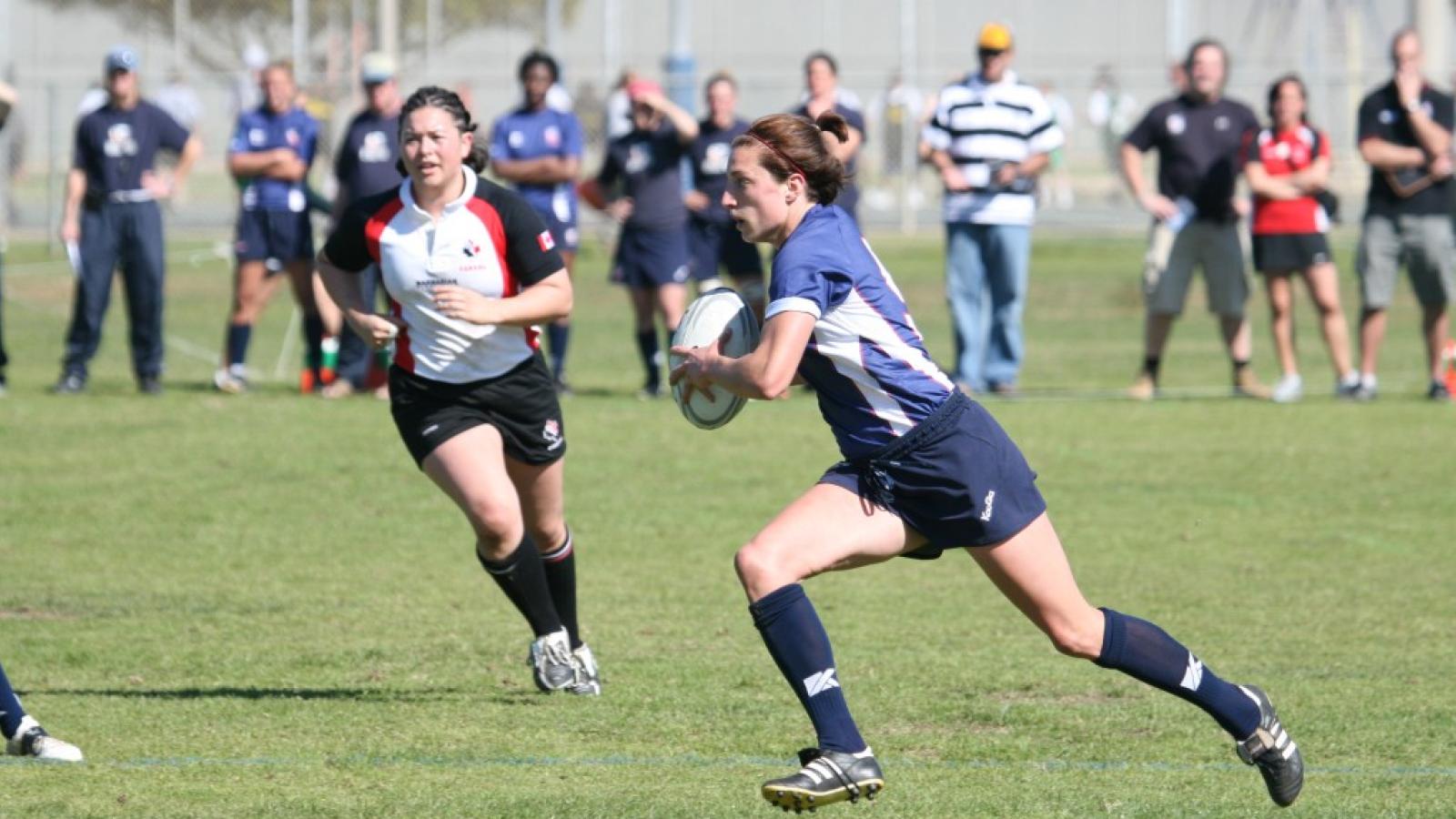Goff Rugby Report sat down with USA Rugby CEO Ross Young to discuss the organization’s relationship with National Collegiate Rugby.
As a follow-up to that interview, GRR contacted NCR and received several statements from NCR CEO Jeremy Treece as something of a counterpoint to Young’s comments.
In addition, during The Rugby Summit hosted by Wisconsin Youth Rugby in Oshkosh, Wisc. this past weekend, GRR elicited some observations about the NCR-USA Rugby divide from several college coaches, some of which coach NCR-member teams, and some that coach CRAA- or ACR-member teams.
The full interview with Young, coupled with GRR editor Alex Goff reading statements from NCR for context, can be seen here or embedded in this article below.
Here, however, are some key points regarding where we are:
1. A Hard Line?
Young says that USA Rugby’s policy is that you have to be a member to legally play rugby. You don’t have to pay for the insurance, but you do have to pay for other services.
2. Can't Unring the Bell
Treece says NCR was given leave by USA Rugby to operate on their own during USA Rugby’s bankruptcy proceedings, and should be allowed to do that. They handle their own insurance, make SafeSport training and certification available to members, and handle their own eligibility enforcement.
However, Treece did not close the door on paying something to USA Rugby, saying: "NCR is comfortable operating under our current membership structure. The current membership dues fund our competitive seasons, and allow us to make investments in expanding our services and growing the collegiate game. Our dues must be invested back into college rugby. We will consider investing in USA Rugby partnerships only if there is a direct benefit for our members.”
Young’s counterpoint to this is that he cannot envision the USA Rugby Collegiate Council approving a dues structure in which NCR teams pay less than non-NCR teams.
3. Teams are Already Sick of This
In a collegiate panel at The Rugby Summit, coaches made it plain that they don’t want to be concerned with whether it’s legal to play this college or that college. They are operating essentially as if there is no barrier to games, and won’t stand for restrictions.
(An aside from the writer—we've mentioned how this division will be more complex in 7s, and both sides have, at times, said to us "what do you means?" It strains credulity that these people think it won't get more confusing in 7s. There are tournaments that groups are trying to organize, and they can rightly be worried that tournament sanctioning, or a team's eligibility to play or move on will be in jeopardy if they don't know exactly what needs to be done.-AG)
4. Barriers to Play Won't Go Over Well
NCR echoed some of those team’s comments, with Treece saying “We urgently want USAR to remove the competition barriers that exist for its members. All teams should be able to play any team regardless of affiliation without fear of penalties. We hope that USA Rugby shares this urgency.”
And the teams and tournaments are feeling the same way. Bring the hammer down on someone for playing a rugby game and see how angry they get.
Who Plays Where?
Teams that are members of NCR: All small-college teams that play as small-college; almost all, but not quite all, men's D2 college teams; slightly less than half of the men's D1 college teams not in D1A; about 50-odd women's college programs NCR calls D1 but are mostly at the D2 level.
Teams that are members of CRAA (and pay dues to USA Rugby): 40 D1A men's programs; a small number (less than 10) of D1 Elite women's teams; about 70 women's D1 teams, and possibly a few others.
Teams that are members of other organizations that pay dues to USA Rugby: Three or four men's D1AA and D2 conferences that operate independently; four conferences of women's D2 in ACRA; a bunch of women's D2 in the West; about 50 men's D1AA teams in ACR.
NCAA Leagues: NIRA D1, D2, and D3.
5. Working on a Proposal
USA Rugby and NCR met in October to try to work out a deal. USA Rugby was supposed to present a plan in December, but missed the deadline. NCR, said Treece, said they understood that it’s a complex issue and both sides are still talking.
6. The 2021-2022 Mulligan
Young said that, essentially, nothing will get solved for this school year. “Realistically … this season, if you like, we’ve got to continue to work through. The ideal scenario is that once we get to … the summer, yes we’d ideally all like to know if everyone’s in the tent.
“We’d all love NCR to be a member … on a fair and valid membership that’s equitable to everyone else and we can all get on with what we want to do.”
7. An Olive Branch
USA Rugby approved sanction for the NCR championship 7s tournament, the CRC (aka May Madness). This was a bit of bridge-building for USA Rugby—not a massive bridge because, really, they had no reason to un-sanction the tournament other than bloody-mindedness. But, doing it now and not making it a big deal has made planning easier for NCR, and helped them secure referees as well as bring non-NCR teams into the event.
NCR paid for that sanctioning (as all tournaments have to).
8. About Those Other Services
The big thing that Young brought up was athlete protection in light of USA Gymnastics abuses. Being under the umbrella of the US Olympic and Paralympic Committee (USOPC) means that USA Rugby is within a bigger and stronger organization (not to mention the International Olympic Committee) when it comes to protections for leagues, teams, coaches, and players in this issue, said Young. NCR, out on its own, doesn't have that protection, he said.
We mentioned that to NCR and since it's a delicate issue, we'll show you our question and the answer:
GRR: Ross Young says a key aspect of why NCR should operate as a member of USA Rugby is that there are certain aspects of game oversight they take care of or provide backing for.
Some of these are laws and some policies, but perhaps the most important, and the ones Young hadn't mentioned specifically before, was Safesport, athlete protection procedures (in the wake of the USA Gymnastics disaster), and how to handle and react to catastrophic injuries.
For example, what happens if, God forbid, there's a horrible injury at an NCR event, and NCR isn't a member of USA Rugby and therefore World Rugby ... does it open NCR up to a debilitating lawsuit?
NCR (Jeremy Treece): NCR has established a successful membership structure where membership dues are fully invested in the college game, not allocated to other initiatives outside of what they were intended for. We provide our member clubs with high-quality national championships, all star competitions, recognition programs, appropriate insurance, eligibility rules, technology, marketing and more.
During its bankruptcy period, USA Rugby endorsed NCR's decision to purchase its own insurance policy for members. We have a staff and board with extensive experience in risk management procedures. We offer appropriate insurance that has been designed and priced specifically for college players.
SafeSport training and certification is available to NCR members. While USA Rugby plays an important role in promoting player safety, any organization can directly access the SafeSport program.
Changes to protect athletes from abuse can be seen in things like field-level floors for baseball dugouts (so you can see into them and better monitor coach-player interaction), to background checks, to increased anti-abuse education programs.
But the negative publicity surrounding the USA Gymnastics abuse case, in which team doctor Larry Nassar allegedly sexually abused over 200 girls under his care (despite nobody listening to or believing the athletes for years, Nassar was eventually convicted of a variety of horrific sex crimes and is serving a sentence of between 40 and 125 years in federal prison). The case, heartbreaking as it is in regard to the suffering of Nassar’s victims, made worse by the fact that no one helped those victims, remains a political problem for USA Gymnastics, the USOPC, and sporting governing bodies as a whole.
This is where USA Rugby comes in. As a governing body of an Olympic sport, USA Rugby is one of those organizations now dealing with the fallout. USAR has to follow guidelines and rules that the USOPC hand-waved for years in turning a blind eye to Nassar’s crimes.
Ultimately, however, this isn’t a bad thing as athletes, especially minors, must be protected from abusers.
What Young is saying is that, as the national governing body in direct contact with the USOPC, USA Rugby is the organization that sets policies, procedures, and training with regard to this aspect of athlete safety. Teams and programs must, said Young, be members of USA Rugby for this reason.






